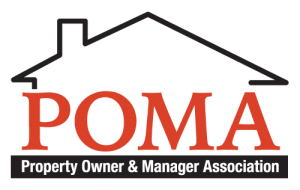Amended RRP Rule (Renovation, Repair and Painting)
In 2008, EPA issued the Renovation, Repair, and Painting (RRP) rule. Since then, the rule has been amended several times, most significantly in May 2010 and in July 2011. This message provides a summary of the most significant changes to the RRP rule. The changes listed below are those most relevant to certified renovators and renovation firms (and, by extension, to the training providers who instruct them). Our next message will include changes most relevant to the training providers themselves. For more detailed information and a more complete set of changes, please refer to the rule and amendments at http://epa.gov/lead/pubs/rrp.
Changes from the 2010 revision are effective now. Changes from the 2011 revision will be effective as of October 5, 2011.
No “opt-out” provision (2010 revision)
• The opt-out provision (which allowed a renovation firm to “opt out” of the some of the RRP requirements where the firm obtained a certification from the owner-occupant of a residence that no child under age 6 or pregnant woman resides in the home and the home is not a child-occupied facility) has been removed and is no longer in effect.
Required information for owners and occupants (2010 revision)
• Renovation firms must provide a copy of records demonstrating compliance with the training and work practice requirements of the RRP rile to the owner and occupant of the housing, and operator of the child-occupied facility, in a short, easily-read checklist or other form. A sample checklist for these items can be found at http://epa.gov/lead/pubs/
Paint chip sample collection and related records (for purposes of determining whether components are free of lead-based paint (as defined by statute)) (2011 revision)
• Starting on October 5, 2011, certified renovators may collect paint chip samples from components to be affected by a renovation as an alternative to using EPA-recognized test kits to test the paint, as previously allowed. If paint chip samples are taken, they must be sent to a laboratory recognized by NLLAP for analysis (see http://epa.gov/lead/pubs/
• If paint chip samples are collected, those records (description of the components that were tested including their locations, name and address of the NLLAP-recognized entity performing the analysis, and results for each sample) must be prepared by a certified renovator and maintained for three years, as already required for other records.
Vertical containment (2011 revision)
• Vertical containment means a vertical barrier consisting of plastic sheeting or other impermeable material over scaffolding or a rigid frame, or an equivalent system of containing the work area. Vertical containment is required for some exterior renovations but it may be used on any renovation.
Interior renovations
• Renovation firms may erect vertical containment for interior renovations. This allows renovation firms to erect vertical containment closer to the renovation activity than the minimum floor containment distance specified in the RRP rule, to give renovation firms more flexibility in designing effective containment strategies for particular work sites.
• Interior floor containment measures may stop at the edge of the vertical barrier when using a vertical containment system consisting of impermeable barriers that extend from the floor to the ceiling and are tightly sealed at joints with the floor, ceiling and walls.
Exterior renovations
• If the renovation will affect surfaces within 10 feet of the property line, the renovation firm must erect vertical containment or equivalent extra precautions in containing the work area to ensure that dust and debris from the renovation does not contaminate adjacent buildings or migrate to adjacent properties. Vertical containment or equivalent extra precautions in containing the work area may also be necessary in other situations in order to prevent contamination of other buildings, other areas of the property, or adjacent buildings or properties.
• In addition, renovation firms may erect vertical containment for other exterior renovations. This allows renovation firms to erect vertical containment closer to the renovation activity than the minimum ground containment distance specified in the RRP rule, to give renovation firms more flexibility in designing effective containment strategies for particular work sites.
• Exterior ground containment measures may stop at the edge of the vertical barrier when using a vertical containment system.
HEPA vacuums (2011 revision)
• HEPA vacuum cleaners must be designed so that all the air drawn into the machine is expelled through the HEPA filter with none of the air leaking past it. HEPA vacuums must be operated and maintained in accordance with manufacturer’s instructions.
• The use of machines designed to remove paint or other surface coatings through high speed operation such as sanding, grinding, power planing, using a needle gun, abrasive blasting, or sandblasting, is prohibited on painted surfaces unless such machines have shrouds or containment systems and are equipped with a HEPA vacuum attachment to collect dust and debris at the point of generation. Machines must be operated so that no visible dust or release of air occurs outside the shroud or containment system.


